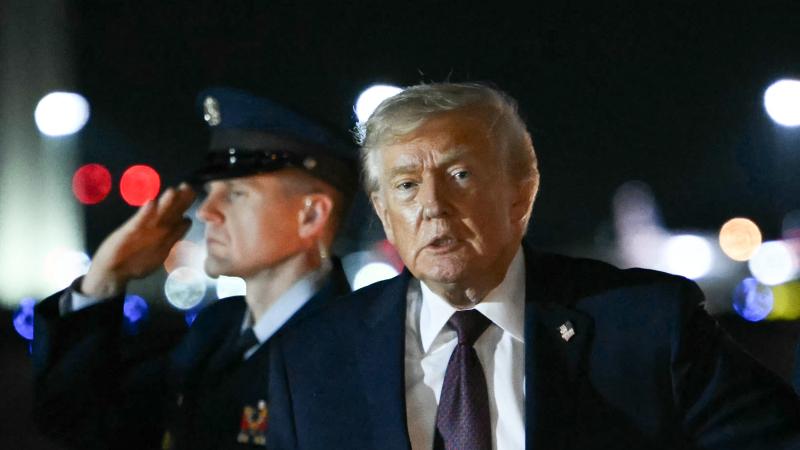The missing flu riddle: 'Influenza has been renamed COVID,' maverick epidemiologist says
As influenza levels continue cratering, some cite COVID measures — even as COVID rates have multiplied nearly sevenfold since the spring in spite of enhanced mitigation policies.
Rates of influenza have remained persistently low through late 2020 and into 2021, cratering from levels a year ago and raising the puzzling specter of sharply reduced influenza transmission rates even as positive tests for COVID-19 have shattered numerous records over the last several weeks.
Where have all the flu cases gone?
Epidemiologist Knut Wittkowski thinks he can answer the riddle.
"Influenza has been renamed COVID in large part," said the former head of biostatistics, epidemiology and research design at Rockefeller University.
"There may be quite a number of influenza cases included in the 'presumed COVID' category of people who have COVID symptoms (which Influenza symptoms can be mistaken for), but are not tested for SARS RNA," Wittkowski told Just the News on Thursday.
Those patients, he argued, "also may have some SARS RNA sitting in their nose while being infected with Influenza, in which case the influenza would be 'confirmed' to be COVID."
The Centers for Disease Control and Prevention's weekly influenza surveillance tracker reports that the cumulative positive influenza test rate from late September into the week of Dec. 19 stands at 0.2% as measured by clinical labs. That's compared to a cumulative 8.7% from a year before.
The weekly comparisons are even starker: This week one year ago, the positive clinical rate was 22%, where now it stands at 0.1%.
Those low numbers continue trends observed earlier in the year in which flu rates have remained at near-zero levels. The trend is not limited to the U.S. Worldwide, health authorities have all reported sharply decreased influenza levels throughout what is normally peak flu season in the northern hemisphere. Rates in the southern hemisphere were also low this year.
COVID mitigation measures cited even as COVID cases surge
Numerous experts have pointed to the ongoing COVID-19 mitigation measures — including mask-wearing, physical separation, and other anti-virus tactics — as an explanation for decreased flu levels.
Timothy Sly, an epidemiology professor at Ryerson University in Toronto, told Just the News that "the reduced incidence of seasonal influenza is almost certainly due to the protection that a large proportion of the population has been using for many months." Those measures, he said, are "designed to be effective against any airborne respiratory virus."
Holden Maecker, a professor of microbiology and immunology at Stanford University, echoed that assessment. "I feel pretty confident that the COVID-19 mitigation measures have caused the reduction in flu cases this year," he said. "Masks, social distancing, and hand washing are all effective counter-measures against colds and flu."
Speculating on why COVID levels have continued to soar if those measures have been so effective at stopping the flu, Maecker said: "I think it's because (1) there is less pre-existing immunity to SARS-CoV-2 in the population, whereas most of us have had vaccines and/or previous bouts with flu; and (2) the SARS-CoV-2 virus seems to spread more easily than influenza, including more aerosol transmission and 'super-spreader' events. Flu transmission is almost entirely close-range droplets and hand-to-nose or eyes contact."
Sly also argued that the different dynamics of COVID-19 and influenza transmission likely play a role.
Claiming that mask-wearing and social distancing are not universal, Sly said that "major transmission events" can result in explosive spread of the coronavirus
"All viral acute respiratory infections will be curtailed by distancing and masking: influenzas A and B, Respiratory syncytial virus (RSV), common cold (more than 100 types of virus), and of course, CoV-19," he said. "But if the precautions are not universal, the transmissions that DO take place will have different consequences and rates of spread."
Wittkowski — who has been among the relatively few academics to consistently criticize widespread COVID mitigation measures — counters that there was "no evidence to support" the contention that masks would stop influenza while failing to stop COVID.
"I think that these viruses are more similar than people want to acknowledge," he continued. "People know everybody is wearing masks and distancing, and so people want to come up with things that are good about it."
Public health officials have at times struggled to explain why positive COVID tests have surged upward in places — such as California, Pennsylvania and elsewhere — where policies such as social distancing and mask mandates have been in place for months.
Data indicate that more than nine out of every ten Americans in most states are wearing masks in public regularly; those numbers have been above 80% since the early fall. Yet average positive COVID-19 tests have multiplied by nearly seven times since the spring peak.
Politicians and health experts have claimed at times that those surging numbers are being driven by individuals who are failing to wear masks and socially distance themselves from others, though such assertions are not often accompanied by much supporting evidence.
A 2019 World Health Organization study, meanwhile, found "no evidence that [wearing a mask] is effective in reducing transmission" of influenza, potentially suggesting that masks may not be playing much role in the currently reduced influenza levels being seen throughout the world.
Wittkowski, who has numerous times over the course of the pandemic called for an end to lockdowns, social distancing measures, and mask mandates, dismissed the idea that those policies could ultimately have much effect on the spread of COVID-19. He has argued that herd immunity, either through natural infections or through a vaccine, is the only way to blunt transmission of the virus."Pandemics end in the same way," he said, "whether we do something or not."
















